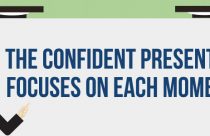Few Easy Steps for Becoming a Confident Presenter

Whether this is your first presentation at a professional conference or your twentieth, showcasing your research to your peers can be intimidating. Everyone feels “butterflies,” even the most experienced speaker. My advice is: Embrace your butterflies! Envision them keeping you energized during your presentation. The tips in the first two steps in this article ,“Professional Speaker,” will help you prepare thoroughly and engage your audience’s interest effectively so your butterflies work for you. The third step, contains tips for delivering your presentation.
Step 1: Prepare Thoroughly
Of course, you know your material, but preparing to share it with others means you have to give some thought to why they should care.
i. Write your specific goal, a statement that begins, “I want my audience to … [know] [understand] [do something, take action].” If you focus on your audience’s interest, you’ll worry less about your own nervousness.
ii. Based on your goal, the audience profile, and time limit determine …
- How you can relate to them? Are they fellow researchers or in professions that apply your research or some of each?
- How to show them that your subject is important for them? Ask for a show of hands of people who are researching related topics right now or plan to soon or ask each person to briefly write down their primary point of interest in your topic as a basis for questions at the end.
- Your main points (on the slides) and supporting details (in your talk), what to keep in the presentation within the time limit and which details you can hand out afterward.
- Any stories you can tell to make your points come alive for your audience.
- Visual media for support – PowerPoint slides, posters, pictures, flip charts, etc.
- Hand-outs – what you distribute at the beginning (the printed “Notes Pages” or “Handout” version of your slides) to help the audience take notes and follow along; what you distribute during the speech for impact at the moment; what you distribute at the end, such as an evaluation form.
Step 2: Practice Making Your Presentation while Motivated by the Presenter’s Mind-set
Rehearse in front of a mirror or with a trusted colleague or two. Either way, you’ll get feedback, polish your content and delivery, learn where to speed up or reduce content to meet the time limit … and gain confidence.
Keep these attitudes in mind:
- I’m focused on my goal for the audience’s information or action.
- I want to show the audience how my topic relates to their concerns.
- I am drawing a map for the audience to understand the path of logic I followed in my research through my presentation so they reach the conclusion I want them to reach.
- I will use language tailored to the audience’s sophistication about my topic.
To know more about how you can improve your presentation skills, do read the next post on “The Final Step for the Confident Presenter“








